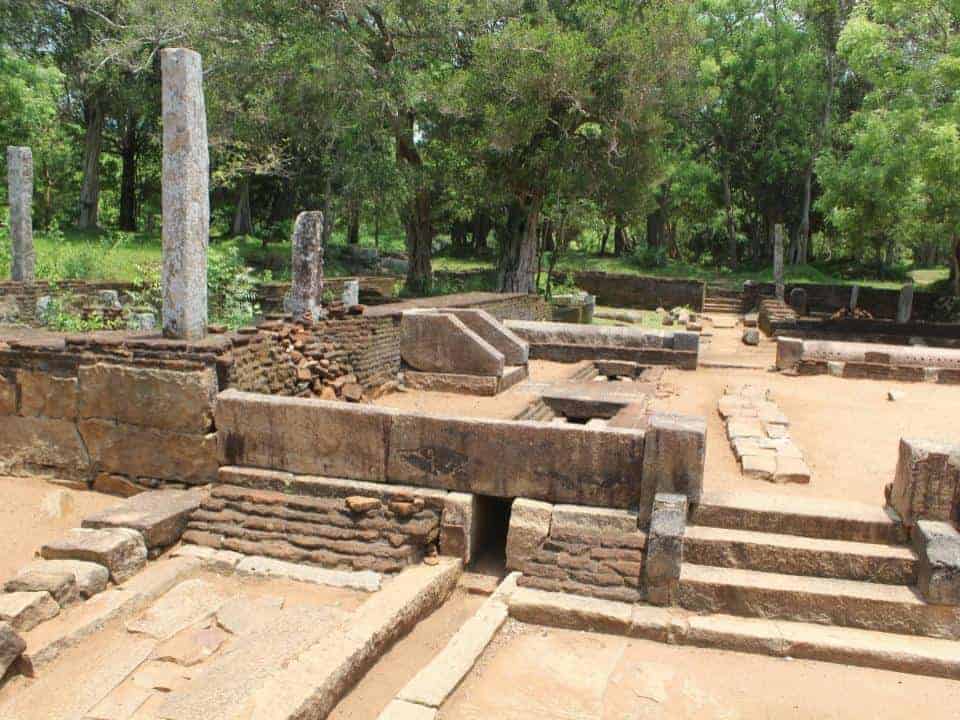Abhayagiri monastery is one of the many prestigious and universally-recognized historical places in Sri Lanka and is also one of the largest complete ones. It is also right up there with its Mahayana fellow Jetavanarama as an important Mahayana institute.
Recently a thorough cleanup job began to reveal the proper stupa behind the thick undergrowth of scrubland vegetation that had grown over the weathered brick surface of the stupa.
Plus, the Abhayagiri Monastic Complex preserves the greatest number of ruined buildings in the Anuradhapura era, covering an area of over 500 acres and built over hundreds of years. Abhayagiri was founded during the reign of King Valagamba, in the 1st Century BC. Originally the site contained a Jain monastery which was promptly removed to make way for a Buddhist site. Valagamba had just rescued the country from a serious South Indian invasion and a large Jain faction had been responsible for some of the damage and also for insulting the king. He was assisted by a member of the orthodox Mahavihara fraternity named Ven. Kuppikula Mahatissa.
The king made the Abhayagiri monastery for the monk. It consisted of a massive brick stupa and twelve buildings in total at the time. But the rules of Theravada Buddhism asserted that a clergyman could not accept a tribute of such a nature. He accepted it anyway and was excommunicated immediately. Very soon Abhayagiri became a Mahayana center as opposed to a Theravada one and Mahayana Buddhism became incredibly popular. The orthodox denomination struggled despite royal support and the writing down of their teachings during Valagamba’s reign. The Abhayagiri fraternity started out as the ‘Dharmaruchi’, and consisted of both local and foreign monks.
Finally, it was King Mahasen’s rule that hit the Theravada sect hard on the head. Mahasen, an ever-ardent Mahayana ruler, used parts of the Brazen Palace chapter house for Abhayagiri when he added parts to it during the 3rd century AD. In fact, many of the buildings in the Abhayagiri Monastic Complex are much more beautiful and in better preservation than those surrounding the original Mahavihara.
These buildings include the so-called Biso Maligawa, a massive chapter house named Ratna Prasada, the stupa itself, the Twin Ponds, the Elephant Bath, and the famed Samadhi Buddha image. During the 5th Century AD, the Chinese Mahayana monk Fa-Tsien visited Sri Lanka. He noted that there was even a massive jade Buddha image with a pearl in its palm. He also observed that there were five thousand monks at Abhayagiri monastery, almost twice the number at Mahavihara.
Written by Vasika Udurawane for Travel Lanka Compass



0 Comment